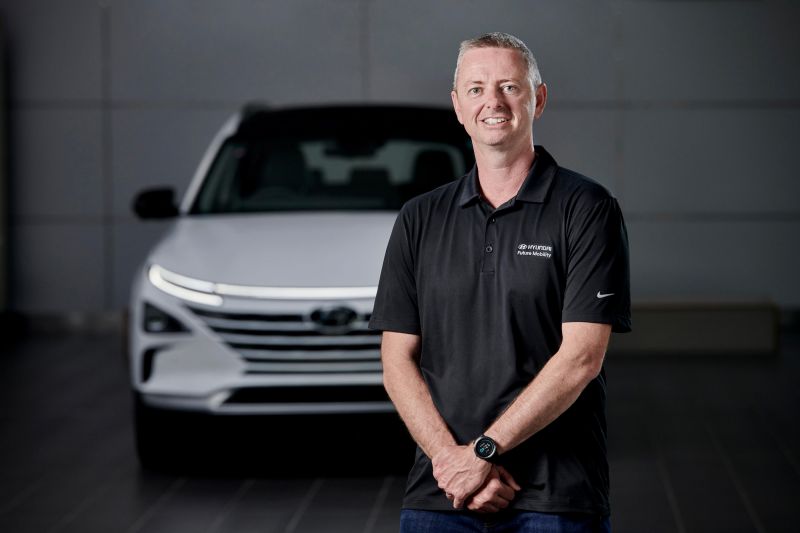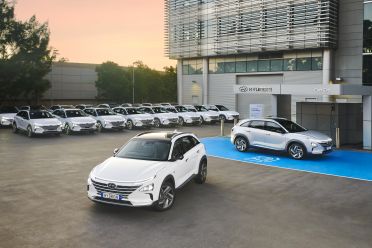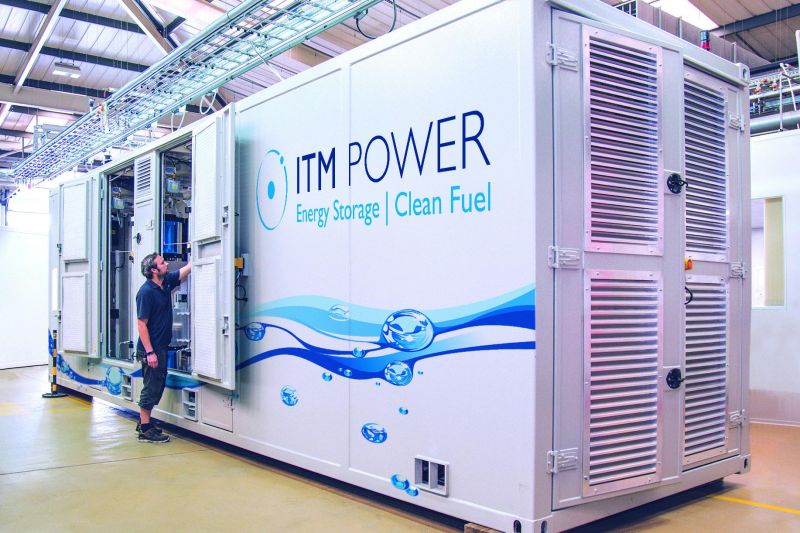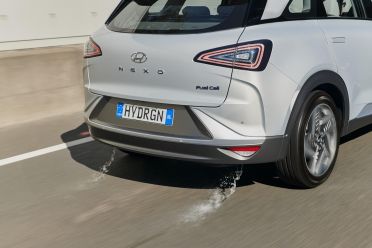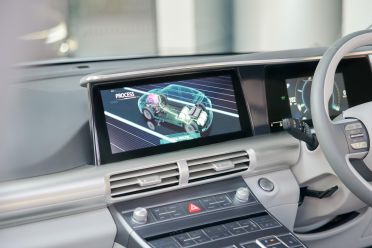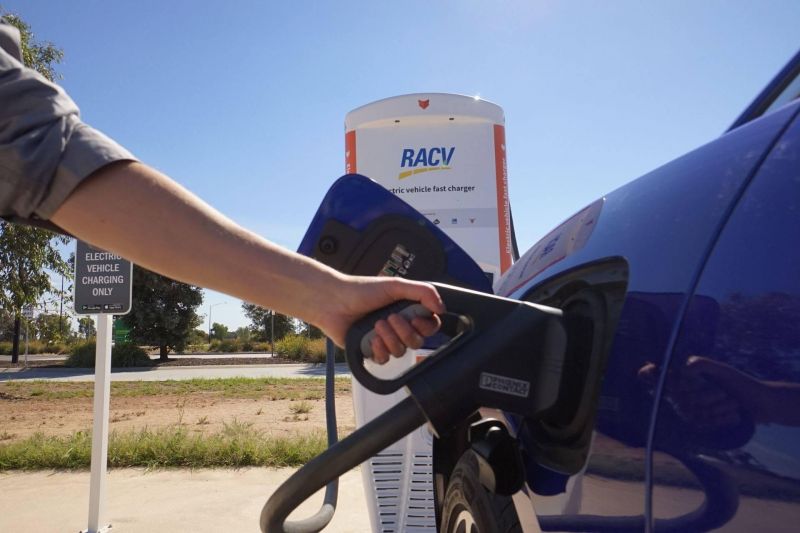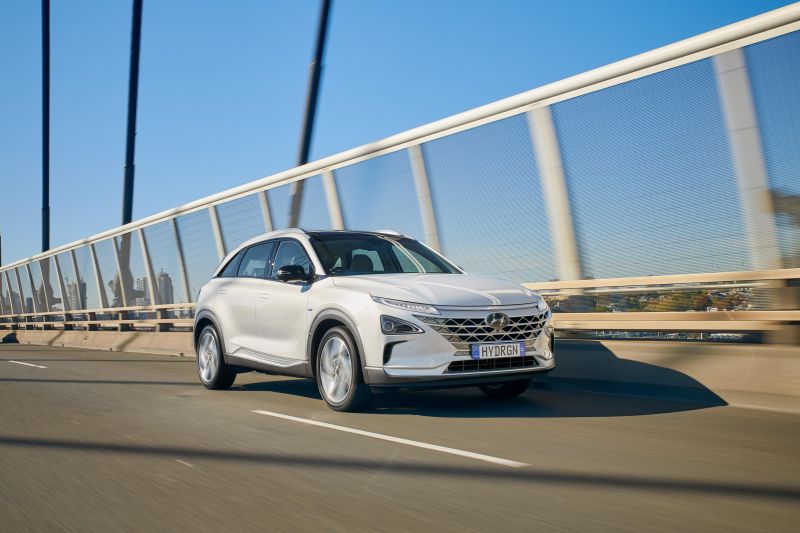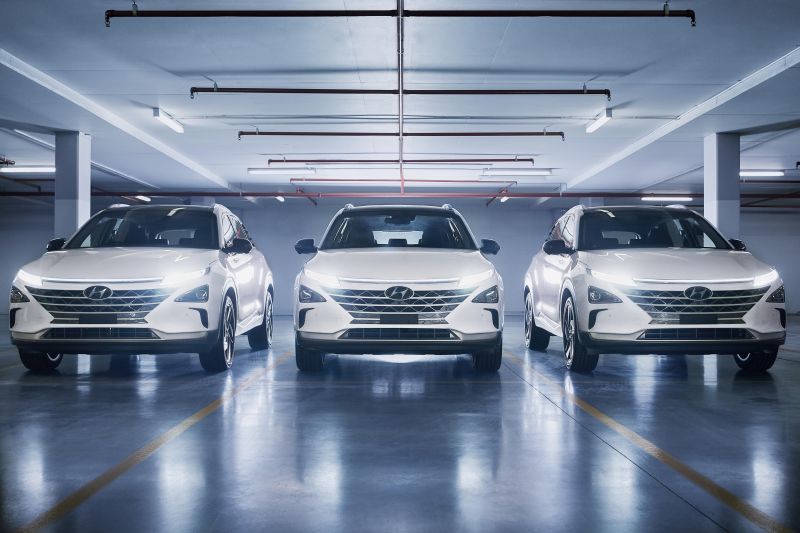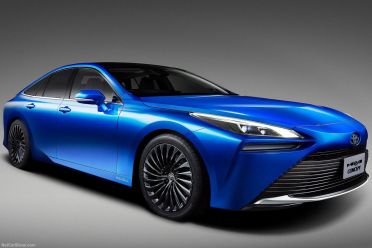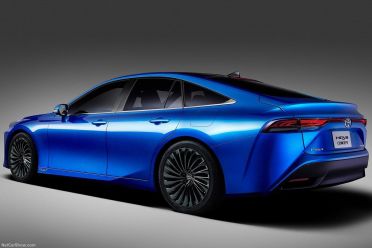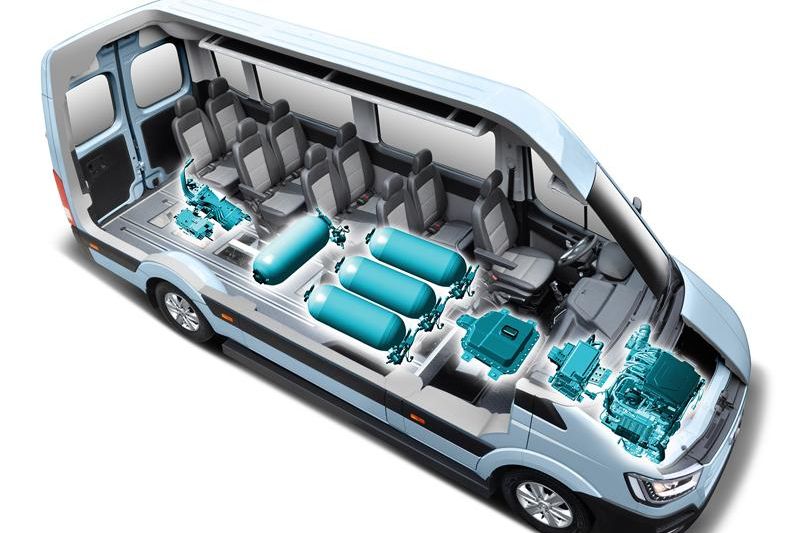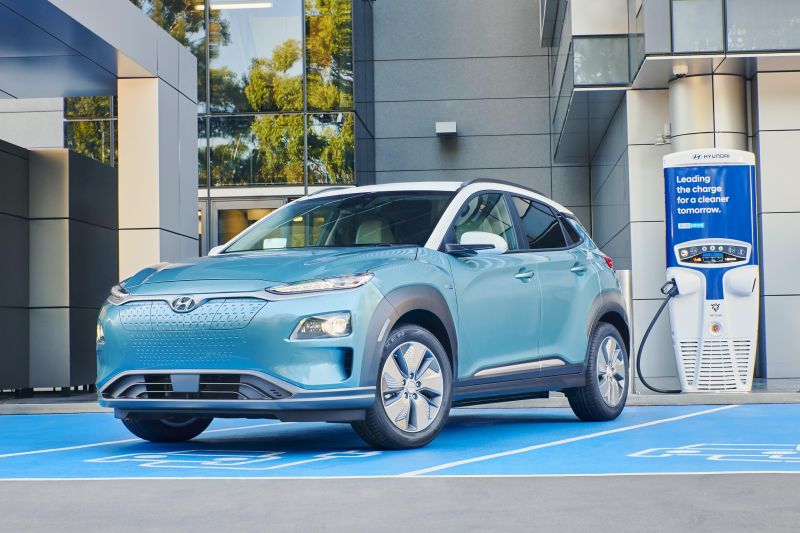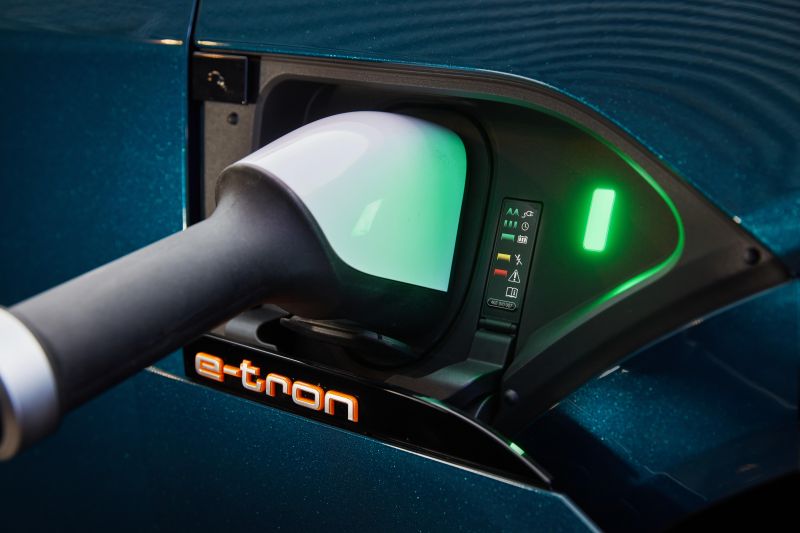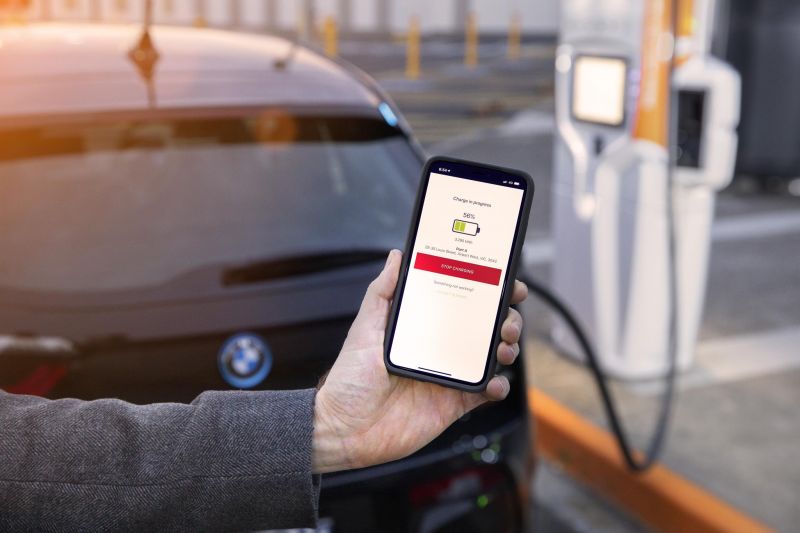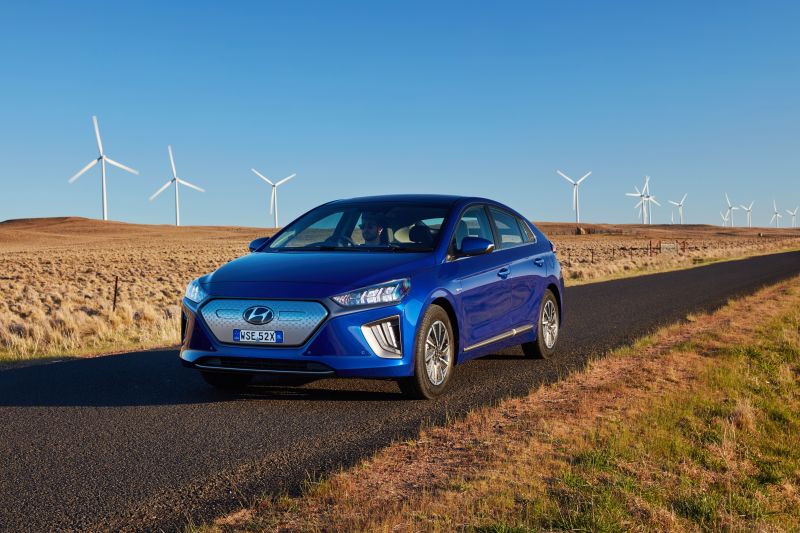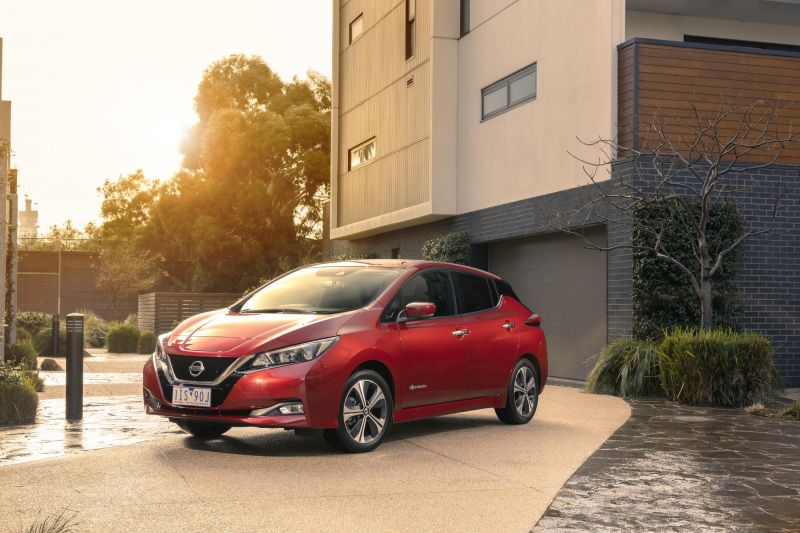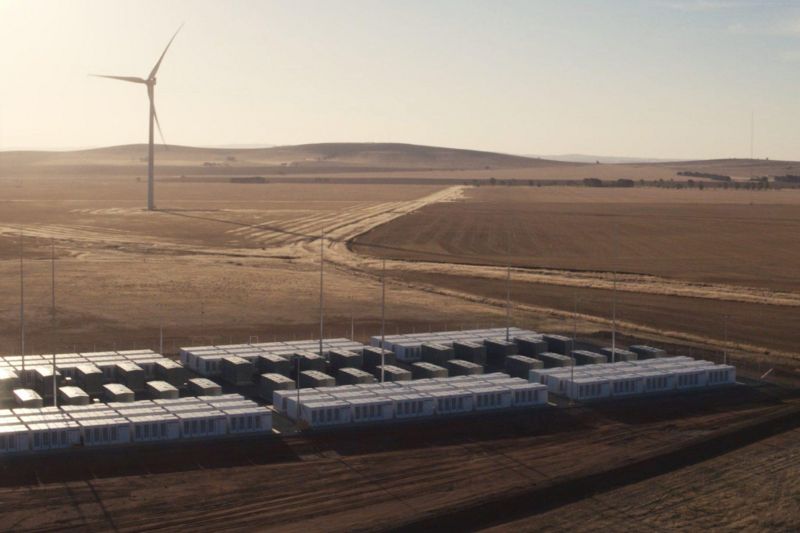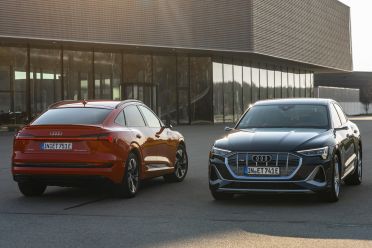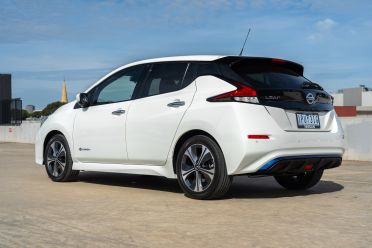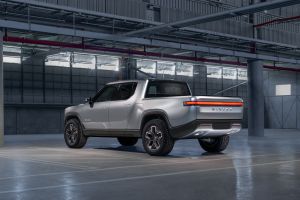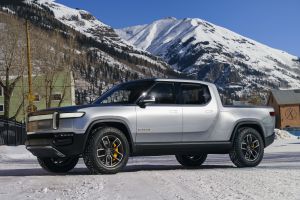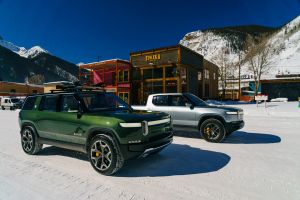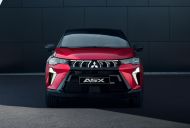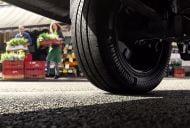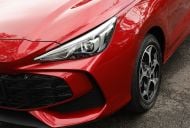Scott Nargar has one of the longest titles in Australian motoring.
Thankfully, Hyundai’s senior manager of future mobility and government relations (that’s right, we shortened it for the headline) can back it up with one of the most interesting jobs out there.
Nargar is responsible for working with local councils, state governments, and Federal bigwigs in Canberra to manage the rollout of hybrid, electric, and hydrogen vehicles in Australia.
He’s incredibly passionate about the potential benefits of widespread electric and hydrogen adoption, and is plugged into the bodies making things happen in both the EV and FCEV spaces.
Here, we chat about the Hyundai Nexo’s rollout in Australia and the current state of hydrogen Down Under, how electric car sales can continue to grow, and some of the challenges associated with charging.
CarExpert: To start with, can you please introduce your title and what it actually means?
Scott Nargar: I’m the senior manager of government affairs and future mobility at Hyundai Motor Company Australia. That job entails me talking to industry, government…
Hyundai has started up a few industry associations, and we’ve been working with government constantly for the last 10 years preparing the market for the eco technology that’s coming around the world, and trying to get this market to be prepared, and catch up.
CE: We’ll get to electric vehicles, but let’s start with hydrogen. Can you tell us about how Hyundai is rolling out the Nexo in Australia?
SN: We’ve completed a lot of testing in Australia and, back a couple of years ago, we even had vehicles here doing cold weather testing.
We based ourselves at Cooma for a week or two, and we’ve done a lot of testing around Perisher and Thredbo and Cooma, and back and forth to Sydney during a winter. From there we’ve gone on to do chassis development for our car in Australia, and now we’ve had the vehicle certified.
It’s been crash tested, got an ANCAP crash rating, and we’re ready to have the vehicle on the market. So the first 20 vehicles head down to the ACT in the next couple of months.
As soon as the [refuelling] station is finished they’ll be deployed there within various departments across the ACT fleet, and with also there we’ve got requests from Queensland, and requests from several other states that are looking at putting in infrastructure.
For ourselves it’s all go for the Nexo… We want to see our competitors here, we want to see the Toyota Mirai hit Australian shores – it’ll be hopefully coming to Australia.
Love to see the Mercedes-Benz GLC F-Cell and the Honda Clarity, and love to see trucks and buses, and green applications as stationary fuel cells. Everything’s going to help get more infrastructure on the ground, get more awareness of the technology, and get things moving in Australia.
CE: What is the current state of that infrastructure? My understanding is that it’s pretty limited
SN: It’s very limited at the moment.
We established a station that was commissioned in December 2014, it’s a small station here at our head office at Macquarie Park in Sydney. The guys at Toyota built a mobile refuelling station on the back of a truck, and that’s travelled around the country and done some bits and pieces.
Really, the first commercial station is the Canberra station.
The first station is going in. We do know the stations down in Victoria with Toyota are in construction, they’re about to start construction, and the guys up in Brisbane with their station are about to go into construction as well.
We’re also aware through some of the property partnerships we’re part of there’s other stations going into Western Australia, South Australia, and we’ve got a lot of interest in Tasmania.
The Tasmanian government has got to be congratulated, they’ve put $50 million up for hydrogen projects and infrastructure.
They’ve got a really good vision down there. They’re already a state that has deployed a lot of renewables, most of that being hydro, but there’s a great opportunity to run line-haul networks, and trucking, and cars, and all types of things down in Tasmania.
Australia has some good opportunities, it’s just trying to get those stations done, and as each station comes online I’m sure ourselves and Toyota will compete fiercely to deploy vehicles onto those stations.
CE: It’s good to have a bit of competition!
For people like me with a limited technical understanding, how do hydrogen refuelling stations work on a very basic level? I think hydrogen, and I just think ‘massive explosion’ but obviously that’s not what actually happens.
SN: No, it’s very simple.
We’ll look at the greener form of it. As long as you’ve got a feed of energy and water, you can go through and make hydrogen on site.
So there’s companies like Nel and another company called ITM Power – they’re based in the UK but they do have a subsidiary here in Australia – they produce hydrogen refuelling stations in 20 or 40-foot containers.
Whether you’re a traditional service station forecourt, or whether you’re a standalone selling hydrogen, you’re a gas company or someone else, through electrolysis – through separating the hydrogen from the water – you could make hydrogen on site, with your only feed products being water and energy.
That energy can be renewable, can be coal-fired, can be nuclear, doesn’t matter what it is. You can make hydrogen from any form of energy, as long as you’ve got that water as well.
Whether that’s recycled water, desalinated water, or fresh water, you can make the hydrogen.
It then goes through and is compressed up. It’s stored in buffer tanks and is compressed up again, and it’s dispensed into cars.
The ideal temperature for dispensing is minus 40. It means you get a nice three-minute quick fill, but there are standards of minus 20 – our station here at Macquarie Park is at ambient temperature for its fill, so it’s not as fast as those ones in Europe.
They’re very safe. I’ve used stations throughout Europe and North America, I’ve used stations here in Australia. I’ve never had an issue, never felt uncomfortable with a station.
I feel more uncomfortable filling up a petrol car, because I’ve had a past experience of standing in a vapour cloud as it ignited in my previous job for the NRMA. I’m very, very comfortable filling up a hydrogen car, I’m still not a massive fan of filling up a petrol car.
I’m probably the biggest advocate for the tech, but there’s a lot of safety built into it. The vehicles have infrared sensors built into them, and the stations talk to the cars, the cars talk to the stations.
Each one knows how much hydrogen is stored at what pressure and what temperature, what’s left in the car at what pressure and what current temperature, and there’s a global filling protocol. They fill up at the fastest time possible within safety parameters.
Everything is communicated. If there’s an issue on either end, either on the station side or on the car side, the filling event just stops. It’s as simple as that.
You don’t have that now at a current petrol forecourt. Unlike a petrol station where you can spray fuel around the forecourt, you can’t do that with hydrogen. You can turn the nozzle back and forth, open it, and nothing will come out until it’s connected to the car, and the car and the station have talked to each other, and the valves are opened.
There’s no vapour, or standing in a vapour cloud as you fill. It’s just very, very safe, and quick, and clean. There’s no messy nozzles and hoses, you’re not going to get your pants or your dress with diesel stains from the hoses, it’s nice and clean, and simple.
CE: You have previously said you could sell the Nexo to the Australian general public if the infrastructure was ready. What does readiness look like?
SN: Readiness for us is having a small cluster.
At the moment, where there’s one station in Canberra and one station in Melbourne, and one going into Brisbane, we need to look at the capacity of those stations. How many vehicles that ourselves and Toyota will deploy to those stations, if there’s going to be trucks and buses running off it.
Our cars will use 6.3kg to do 666km, and generally someone will do that over a week or two. A bus will use 50kg every single day 500km, a truck will probably use more.
So it’s understanding how many cars are deployed to that station, how many buses and trucks we expect to use it, and then how many more stations do we need in that city. So starting to build a cluster of stations up in a zone.
For example, we think three stations in the ACT would be more than enough – I think there’s 30 or 40 [petrol] stations in the ACT now. So having three, there’s one in Fyshwick going in, having one very close to the centre of the ACT, and having one on the other side of town would really do the job for the ACT.
We’re looking at that in a number of locations, especially down in Tassie with their projects down there, of how we prepare to have clusters. And once we have clusters, we can then look at cars to mums and dads.
When there’s only one place to refuel, it’s hard to start to put cars into the public in those early stages. You’ve got to make sure there’s choice and accessibility.
CE: When you say 30 or 40 stations in the ACT, you mean petrol stations?
SN: Yep, petrol stations. We don’t need that many.
I think petrol stations are almost becoming like McDonalds. They’re usually in fairly convenient locations, obviously they’re working hard to try and sell you as much stuff in the convenience store as they can, not just petrol.
But that goes for our electric cars as well. We’re saying to the oil companies, our people that are EVs now – either the Kona EV or the Ioniq EV – have got no reason to go to a petrol station. They can go to a supermarket and buy what they need cheaper. So what are you going to put on a forecourt to drag those people in?
They certainly don’t need petrol or diesel… I’d love to see some DC charging on service stations around Australia, especially considering we’ve taken so many LPG assets off those forecourts right around Australia.
Especially here in New South Wales, there’s a nice patch of ground where a big LPG tank used to sit off to the side of a forecourt that’d be ideal for three or four car spots and EV chargers.
CE: There’s more to come on the electric world, but while we’re on hydrogen… There’s been talk from the USA about hydrogen working really well for heavy or commercial vehicles in a way that electric power can’t, but focus has swung away from it in cars.
What future do you see for it in passenger vehicles? Because obviously Hyundai is committed.
SN: There’s another of other manufacturers with their vehicles coming, bringing their products out.
We don’t see hydrogen fuel cell technology ending up in something as small as an Accent or an i30.
When you’ve got more mass to propel around, something large passenger vehicle sized like the Mirai, or something medium- to large SUV sized where you have more mass to propel, you want to do much longer distances that an EV might not be suitable for just yet, fuel cell technology really comes into its own.
Probably the best deployment of the the technology is in those heavy mass vehicles, so buses, trucks, trams, trains, ferries. We’re looking at it, and in discussions with multiple opportunities for all of those in Australia – marine applications, rail, and line haul, and passenger transit opportunities.
As a manufacturer that deals in everything from vehicles to train, to ships and everything else in between… We know there’s been public announcements about fuel cells going into our excavators and construction equipment.
In the future, especially when companies are banning internal-combustion in light-heavy vehicles, there needs to be an opportunity for a zero-emissions option. It just seems that the heavier the mass, the more beneficial it is to run a hydrogen fuel cell drivetrain.
But for that you need infrastructure.
CE: What does the conversation with governments look like around hydrogen? Because it’s been a struggle getting Federal and state-level support for electric vehicles.
Is there much talk in government about pushing hydrogen infrastructure?
SN: It’s really changed in the last year.
Doctor Finkel’s commission at the beginning of 2019 to write the Australian Hydrogen Strategy, that was completed in December last year, and it got full endorsement from COAG [Council of Australian Governments].
It’s very rare you get everyone to endorse something. All the ministers within COAG endorsed Dr. Finkel’s strategy.
Since then, even with the dramas with COVID this year, we’ve seen some amazing announcements by governments. $50 million from the Tasmanian Government, some really big investments from ARENA – I think it was $70 million from ARENA for projects around Australia.
The Clean Energy Finance Corporation has I think it was $500 or $700 million for hydrogen projects. There’s been a massive shift and a massive turnaround, and I think the current Federal Energy Minister, Angus Taylor, has made some really good comments about some stretch targets for hydrogen which have really stimulated the whole industry.
The catchphrase is H2 under two, so a kilo of hydrogen under $2. That’s got the whole industry, and the world, talking about the opportunities here in Australia – which is great for jobs, and manufacturing, and engineering here in this country.
We can do a lot of it here, we’ve got a stretch target set by the government, there’s investment – both private and government investment. Now’s the time for everyone to stop talking and start getting some things done.
We’re in a lucky situation ourselves [Hyundai]. The cars are finished, they’re certified, crash tested. They’re about the hit the market. We’re going to work really hard with our partners around Australia to try and get more infrastructure.
Some of the best opportunities for hydrogen in Australia is the line-haul trucking movements between Brisbane, Sydney, and down through Canberra to Melbourne. Both the inland and the coastal route, and having a couple of hydrogen stations placed on those – either on existing oil company forecourts, or fresh stations.
Looking at those opportunities, if there’s a station put in Albury Wodonga, looking at opportunities to run the local buses on it. What are the local government opportunities with the cars? Can we have the Woolworths delivery grocery truck running on hydrogen like they do in Japan, where 7/11 delivers their groceries in hydrogen trucks?
When an asset is deployed anywhere in Australia, we work very hard – whether it’s our technology from Hyundai, or some of our competitors’ technologies – to get as many transport opportunities onto that station as possible, both heavy and light to try justify it being there, and to justify the next station, or the cluster of stations in that town.
It’s our job to make sure we can get a good deployment of vehicles on those stations to justify the next one.
CE: It’s an expensive technology compared to internal combustion at the moment, hydrogen. That Nexo is significantly more expensive than the equivalent Santa Fe, for example.
If the rollout does continue, do you have a timeline for when a hydrogen SUV could be more closely aligned on price with an internal-combustion vehicle?
SN: There’s been numbers thrown up around the world from different analysts or companies saying 2025 to 2030 That’s all going to depend on global rollout.
We can do an amazing job and roll out tens of thousands of vehicles in Australia, but we build vehicles – and other manufacturers build vehicles – for global markets. We need to see the take up in global markets around the world.
And that’s starting to happen, but the volumes are still in their hundreds, they’re not in their thousands. As bigger projects happen and we start selling the vehicles in states or countries in the tens of thousands, I think you’ll start to see a [price] decrease.
We’re lucky enough that Hyundai’s done a great job from our R&D centres, the guys in Namyang in Korea, and also the fuel cell centre in Chungju. They’ve managed to integrate the components across a number of platforms.
So the electric motor in our fuel-cell car is the same as the electric motor in our Kona EV. Some of the power control modules are the same in both cars.
The battery in our fuel-cell vehicle is the same as the battery in our hybrid Ioniq. Another example is the Kona EV battery is a 64kWh battery. We’ve got six of those in our electric buses.
Having those parts that can be built en masse – the more you build something, the cheaper you’ll be able to buy them from the suppliers and plan for the future.
Having the same components across as many light and heavy vehicle platforms as possible, and then signing cooperative agreements with other manufacturers to share that technology, is really the way to go – and many manufacturers have done that.
Hyundai has signed agreements to share technology with Audi, Volkswagen, Skoda, and Porsche. We’ve signed an agreement with Cummins to do the same thing. Toyota has done that with BMW, General Motors has done it with Honda.
That’s how we start to get the price down, by driving scale and volume. And doing that you need to have those components used in as many drivetrains as possible.
CE: On the electric front, you have spoken at length in the past about a lack of government support for the technology in Australia.
Where do you see that conversation as we speak in 2020?
SN: There seems to be a dramatic shift… Towards the end of last year we did begin to see the conversation changing from all sides of government.
We had one side that wasn’t the most supportive of EV technology, and another side that was probably over-guessing what was physically capable of producing by manufacturers.
Everyone’s come back to the centre somewhere, and there’s been great support with EV infrastructure rollout. We’ve seen some amazing take-up of EVs within local government councils, there’s been some great take-ups within state governments.
We’re looking forward to seeing the Federal Government’s electric vehicle strategy towards the end of this year. There’s been a delay because of COVID, and that’s fair enough – a lot of people writing out the stuff for the EV strategy were taken onto the COVID taskforce teams.
All the numbers and calculations guys were taken elsewhere to do a much more important job. But as they start to transition back we’re hoping to see that strategy before the end of the year.
We’ve seen some good messaging from both sides of government, and even from some of the independents and The Greens as well.
We need to make sure no-one – whether it be industry, government, or the media – is making claims that cannot be substantiated with miles of infrastructure going in or volumes of cars turning up. It’s going to be a slow transition in Australia.
Of course I’d love to speed it up as quick as I can, and so would some manufacturers who have EVs right now, but I’ think the awareness is starting to grow – and that’s probably the biggest thing. How do we get more cars on the ground, and how do we get more competition?
I know I work for Hyundai Motor Company Australia and I push the product very hard, but I think the best thing we need is competition. I want to see more vehicles competing against our Ioniq and our Kona, and our future EVs we’ve got coming in.
Competition drives awareness, and it also drives infrastructure investment. The more manufacturers who come here, the more people are going to invest in infrastructure, the more cars are seen by mums and dads, and their consideration changes from a petrol or diesel car into an EV or even potentially a fuel-cell car in the future.
CE: Do you think the way people look at charging and infrastructure has changed recently as well? Although there is a bigger network of public chargers, for the most part these vehicles are plugged in at home
SN: It is, 90 per cent of charging is done at home.
I’m always looking for the next great drive, I want to do a couple of drives out to as far west as I can in New South Wales looking at the charging opportunities there – and there’s still not a whole lot.
The NRMA has got to be commended for the work they’ve done putting 41 50kW DC chargers through regional New South Wales, joining those regional towns between each other.
And we’ve seen a state government department based in Orange, in the central west of New South Wales, recently take on 10 Ioniq EVs, because they can see the practicality of running the vehicle with that kind of range in a remote regional area.
Those projects like the NRMA network are great, and they’re highly visible to their couple of million members here in New South Wales. We’d love to see a more consistent approach across the country.
Chargefox and the guys down there, Tim Washington and the team, are doing an amazing job putting in stations around Australia. They’ve recently taken over the Queensland network, the NRMA network, and the network in Western Australia with their payment system.
So I can use one app or one card to pay for the use of those stations across all of the Chargefox network, and we do know that Evie, the guys that have been funded by the Federal Government are putting in a network of stations.
They’ve just partnered with Caltex… they’re going to put in ultra-rapid charging stations, 350kW charging stations, into Caltex sites.
So we’re going to start to see them, they’re going to start to become the norm. At the moment even as someone who drove an EV to work this morning, I’d still like to see more in visible places – at you McDonalds, at your Woolworths supermarkets, at your Aldis, at the council chambers.
Just more visible chargers. It doesn’t have to be on an oil company forecourt if people have got a problem going to those, it could be anywhere.
At the end of the day, you’re able to charge at home. The best thing about charging at home is that you’re the provider of the energy for the car. You can choose to charge your vehicle when off-peak cuts in and get half-price fuel.
There’s no way you can go to a petrol station now and get 50 per cent off your petrol costs in the middle of the night, but you can do that at home. The best idea is to charge at home, get a charger installed on your wall. A good charger is going to do your next 10 cars at home.
You buy it once with your first car, and it’ll stay on the wall and charge up all your future cars. It’s a good investment, it’s a couple of thousand dollars. In our case it’s $1950 when you buy the vehicle, that’s for the average home fit-up, and once it’s there it’s there.
It’s probably going to add value to your home as well if you go to sell it.
CE: One of the common counter arguments to electric vehicles is that Australia’s energy grid is still predominately coal-fired, so we’re not getting the full environmental benefits of going electric.
Is there talk about reforming the energy grid as we push to electric cars as well, is it that not really part of your remit?
SN: We’re talking to all departments, and there’s been good comments by the opposition… talking about coming together as one, and as we’ve done with COVID working together for the benefit of the country moving forward. Coming together for; what are we going to do – which also comes into EVs in the future as well.
I know a lot of the charge stations going in as part of the Chargefox network have large batteries and solar put next to them, they’re running on renewables which is great. I suppose if all the chargers are going flat out and they’re taking full 350kW, which only the Porsche [Taycan] can do at the moment, they may get a supplement from the grid.
But the other way of looking at it is what’s happening with our national fuel security at the moment. We import 92 per cent of our fuel, I think that’s the right figure at the moment.
Even for [electric] vehicles powered by a dirty source in Australia through the powerpoint, it’s still oil we aren’t bringing in from another country.
If there’s another COVID, or another natural disaster, or there’s tension up north of us, at least we can always power these vehicles with energy made here in Australia. I’d prefer them to be green.
I’d rather have all my eco products, whether it be fuel-cell or electric vehicles, running on green energy – but it’s really ensuring Australia’s got fuel security having more fuel cell or more electric vehicles running on what we’ve got right now, which is a mix of renewables and traditional coal-fired, gas turbine, and other forms of generation.
CE: Coal-fired, renewably powered, or otherwise, can our grid stand up to the strain of having a nation plugging in at the same time every night?
SN: I think it can, and some of the information coming out from AEMO [Australian Energy Market Operator] and some of the other regulators around this are all looking fairly positive.
The benefit with the technology coming in the vehicles is you can choose when you want to charge. With our vehicles it’s very simple to choose to start charging after 7pm, say, when off-peak cuts in.
So you’re picking up the energy when the grid is lower. Ideally we want people charging during the day when the sun is shining.
We’ve got a heap of solar coming into the networks, and network providers struggle to provide frequency in the grid because of the intermittent energy, especially if clouds come in front of the sun, the grid’s got to stabilise itself.
The more cars charging during the day and picking up the curtailed renewables, and the more cars charging at night when the energy load is down, is the best way to do it. We don’t think people need to plug their car in and charge as soon as they get home.
They can plug it in, press a button on the dash, and have the car charge at 7 or 8pm. Scheduled charging, and a lot of smart chargers are going to come in, a lot of smart meters and smart grids, are going to do that for us anyway – whether it’s the vehicle controlling it or the smart meter at home, or the smart charger.
The grid stability is going to be controlled by technology that’s actually in our market now, and it’s coming in bigger forms.
The benefit is also bi-directional charging. So the Nissan Leaf has got it now, manufacturers with Type 2 CCS – which is the most popular global standard – are working on it now. There’s trials being done now, we should see that in the coming years.
The ability to be able to suck up and absorb a lot of energy into your car – in our case 64kWh of energy into our car – that’s four and a half times the size of a Tesla home Powerwall sitting in your vehicle. And that can go through and stabilise the grid for those energy events where the sun may be shining and a bit of cloud comes across, and the grid’s got to stabilise.
The South Australian Government is doing projects on that now with the install of solar panels and Tesla batteries in government housing facilities, and they’re looking at opportunities to run trials using cars that can feed back into the grid to help stabilise the grid.
Basically using them as mini backup battery solutions.
CE: I know you’re in a privileged position, because Hyundai has relatively affordable electric vehicles on the market already, but in an ideal world what would you like to see happen to lower the cost of electric vehicles in Australia?
SN: I think getting the volumes up. And whether it’s an incentive that’s put on the vehicles, that’s always an issue that’s either loved or hated by people, but I think the best thing for us – and the thing we’re talking to government and industry about now, and talking to both equally – is the more infrastructure that goes in, the more awareness there is.
The more fleet transitions, so looking at real government fleet transition – and we’re seeing some great stuff by local councils, I’m doing some case studies now… the biggest fleets in the country are owned by governments.
It’s not saying you’ve got to buy a vehicle that’s a little bit more expensive and change it over every three years like you do now. Our vehicles have an eight-year warranty on the battery.
Keep if for another year or two. Justify the cost of the vehicle by keeping it a bit longer.
The more vehicles that are used on government fleets, the more are going to be turned over and put into the hands of mum and dads so they can get into their first EV as a second-hand vehicle.
Competition is going to drive that. As long as we start seeing more cars coming in from different manufacturers.
We like to think we build a car that’ll suit everyone’s needs right now, but someone might want something a bit different from what Hyundai currently offers. Having more competition here is going to drive more awareness, more investment in infrastructure.
Then we finally get on the journey of transitioning our country to what the rest of the world’s doing.
CE: Where is Australia in relation to parts of Europe, and parts of Asia on the electric vehicle transition? We often hear that we’re a long way behind.
SN: The figures we were told is that we’re 10 to 15 years behind on the fuel-cell journey or the electric vehicle journey.
We’re still a fair bit behind at the moment, it still makes up a fraction of our annual vehicle sales. That’ll change a bit this year, obviously there’s been a downturn in the new car automotive market with COVID, but we have seen the sale of EVs – which has been heavily publicised – continue to grow, and rapidly grow.
So I think we’re still a bit behind, we’re going to be a bit behind for the next couple of years, but I think as more government and private investment happens we’re going to see things start to transition in Australia pretty quickly.
The government is doing a great job working with private industry to get investment for EVs and fuel cells happening.
CE: You have quite a clear vision for how hydrogen and electric power can work together, not so much compete with each other going forward. Can you lay that out for us please?
SN: It’s not a clear break of where it happens, but the best way to think about it is everything that runs on petrol today will more than likely run on electricity in the future, and everything that runs on diesel today will more than likely be hydrogen fuel cell in the future.
There’s obviously a break point when it comes to the mass of a vehicle, and we will see pickups and different things from different manufacturers with electric drivetrains, but we’ll also pickups and commercial vehicles with hydrogen fuel-cell drivetrains.
It just depends on how far they’re driving, and how quickly they need to charge up to keep going with the business they’re doing.
That break point is pretty much, everything that’s petrol we expect to see EV in the future, and everything that’s diesel we expect to see hydrogen fuel cell in the future. So EV for petrol, fuel cell for diesel – roughly.
There’s always going to be variations of that, but that’s just kind of where the break point is.
CE: Is there anything exciting in the works you’d like to tell us about exclusively?
SN: [Laughing]
There’s some really exciting things in the pipeline, but I cannot talk about them.
We do have more EVs coming to the country, and from a Hyundai perspective with hydrogen fuel cells, we’ve just put our first hydrogen fuel-cell trucks into Europe. We’ve got a joint venture with a company in Switzerland, we’ve got 1000 trucks that are going to be deployed over the next couple of years. The first trucks are arriving there.
The first hydrogen buses are arriving in Korea now, they’re heading other places. There is a lot of interest in hydrogen trucks and buses, marine applications, here in Australia and stationary fuel cell stacks… we need to make those opportunities, especially with heavy vehicles, they need to be justified with volumes, and for volume we need infrastructure.
We’re working very closely with governments and industry around Australia, looking at how we can deploy not just our own brand, but all brands, light and heavy vehicle infrastructure – especially the stationary fuel cell stuff.
Think of mining camps, or remote airports, or remote communities that currently have diesel trucked in from the coastline into the centre of Australia. We can make a lot of renewable energy from solar or wind in our remote areas, store it and use it to power our transport needs and also the grids of those remote communities without trucking diesel in from the coast.
It’s not a future utopia, it can happen right now, it’s just about starting the change… We are leading the world with the transition when it comes to new investments.
Where around the world COVID has put a pause on a lot of big projects, the Federal Government’s got to be recognised, and the Tasmanian Government, for during COVID making really big, significant announcements that have got global attention.
We’ve got global companies ringing us up an asking us ‘what’s happening in Australia, how can we be a part of it? You guys are doing good during the current COVID crisis, and you’re making investments that generate jobs, and generate exports off the back of this crisis to keep Australia going. How can we be part of it?’.
So we’re very excited about what’s been announced by the government, and the interest from overseas companies that want to come and join the transition here. Hopefully that speeds things up.





